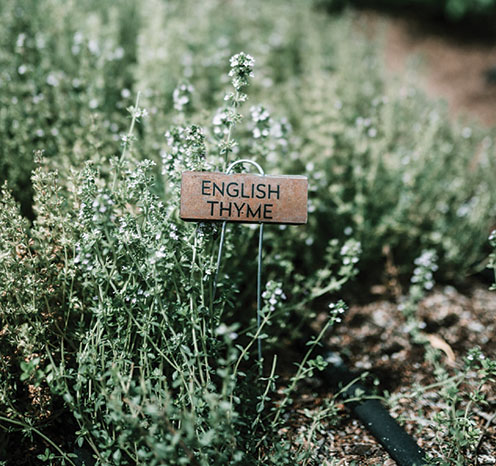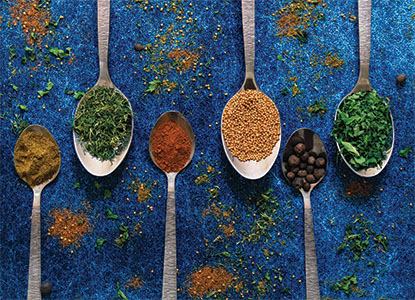One secret to great food is seasonings. The fresher they are, the better the taste. Herbs have a long and storied history. Many voyages were made to discover routes to faraway lands for spices. Used for food and medicine, only the wealthy could afford them at one time. Seasonings such as cinnamon, cassia, cardamon, ginger and turmeric were important items of commerce. India accounts for 75 percent of global spice production, and we in the U.S. are blessed to have access to a wonderful assortment of flavorings at our local grocery. Even better, less expensive and more convenient than going to the store for herbs and spices is growing your own.
Herbs, the leaves or stems of tender plants, and spices, the berries, seed, fruit, root, bark or aromatic substance of a plant, enhance our food and health. Because of our mild climate, we can grow many herbs here. They can be cultivated in a vegetable garden, flower garden or pot, or even in a container on the window sill.
Grow what your family enjoys. Fresh herbs can be included in many dishes. Easily dried or frozen for later use, there’s no reason not to grow enough for the entire year. Most herbs grow readily from seed and require full sun (six to eight hours).
HERE ARE SOME APPETIZING OPTIONS:
BASIL
One of the most popular herbs used for Italian cooking, basil prefers warm weather and grows as an annual. Single leaves or whole stems may be cut above a pair of leaves. This allows the plant to continue to grow and preserves it for future use.
CORIANDER/CILANTRO
A seasoning superstar, this plants leaves add a fresh, zesty flavor to salsas and Tex-Mex recipes. It’s seeds, called coriander, are used to spice meats and other foods. It grows to 16 inches high and tends to bolt. Planting cilantro
in successive plantings ensures a continuous supply.
OREGANO
A must for the herb garden, oregano adds a peppery flavor to Italian dishes. This perennial plant grows 12-24 inches tall with an 18-24-inch spread. Plant in a sunny area in well-drained, light and sandy soil.
ROSEMARY
A garden favorite, rosemary adds
a piney, bittersweet flavoring to pork, lamb, poultry and other dishes. In our area, it can be grown as a perennial and stays green throughout the winter. Rosemary likes dry, poor soil, so don’t overwater. An old tale: If your rosemary blooms, the wife rules the house.
CHIVES
This long-lasting, perennial herb can be harvested all summer long. Ideal for edible landscapes, it’s easy to grow and has a mild, onion-like flavor.
ENGLISH THYME
This plant is highly aromatic, high in Vitamin C and great for
flavoring meats, vegetables and tea. With judicious harvesting, it is a perennial.

LAVENDER
Celebrated for its scent and attractive flowers and foliage, lavender is popular for its oil, which is used in aromatherapy, alternative medicine and beauty products. There are many varieties of lavender, and all require hot, dry growing conditions. Due to our high humidity, I’ve only had success with Spanish lavender, and that’s only after getting the plant well established with frequent watering the first few weeks. It’s a perennial and will stay wispy and beautiful if cut back after flowering. Forget to prune, and you’ll end up with a stiff, woody stem.




Pingback: Creative Ways to Incorporate Indoor Plants into Your Home Decor - Gulf Coast Woman Magazine